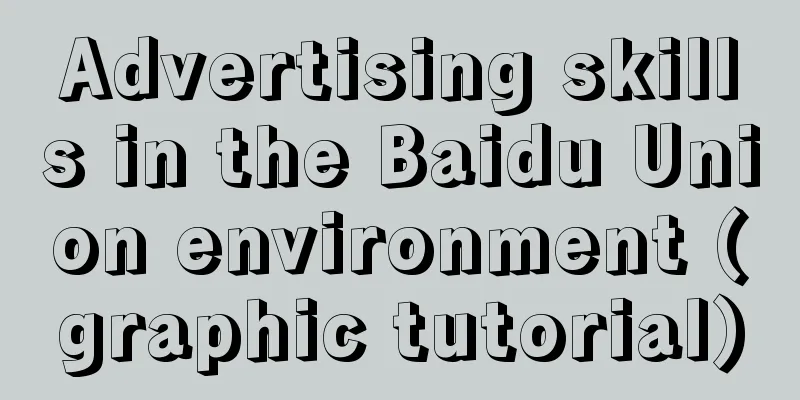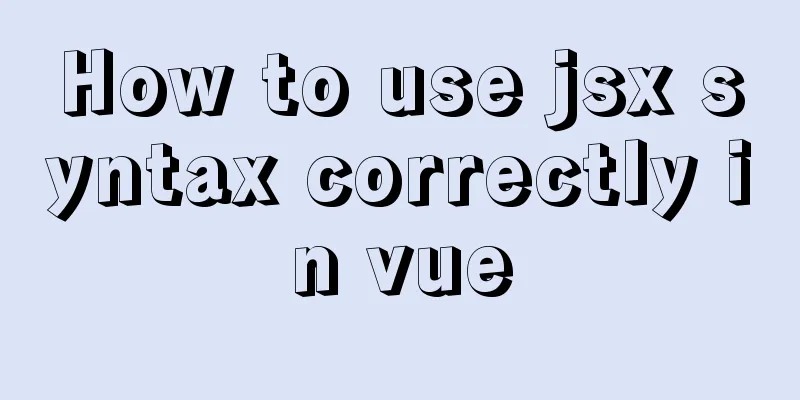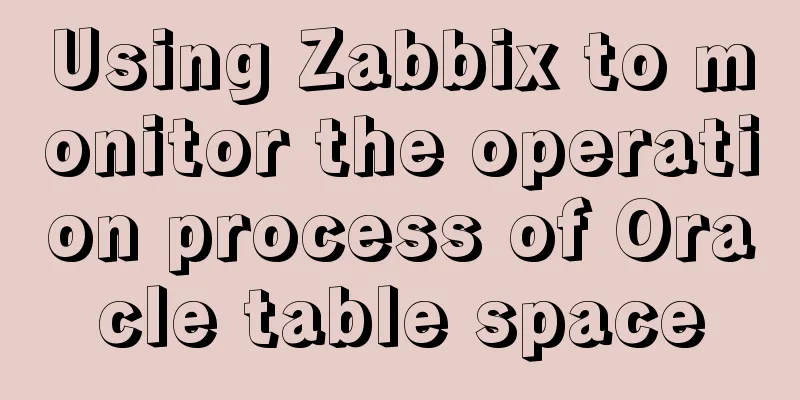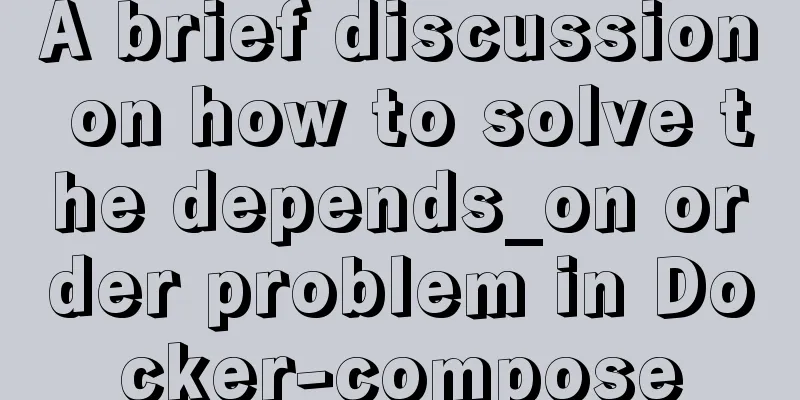Advertising skills in the Baidu Union environment (graphic tutorial)

|
Recently, students from the User Experience Team of the Product Department have conducted a series of studies on advertising in the alliance environment, aiming to optimize the advertising of alliances in a more scientific way, improve the user's online experience, enhance the advertising effect, and create a win-win situation for users and advertisers. Of course, the Internet environment is diverse, and different websites have different designs and layouts. It is not easy to improve user experience and enhance advertising effectiveness in a complex and changing environment. This research is just a superficial attempt. If everyone can be inspired by it and conduct in-depth research, and apply it to practice in the near future, then our user experience team will be very pleased to have served the purpose of inspiring others. 1. Preparation before the experiment 1. Research subjects: We selected the main text pages and list pages that accounted for the largest proportion in the online alliance environment as the research objects, and took the high-quality main text pages and list pages as the benchmark; 2. Research Methods: We conducted eye movement research, observed heat maps, and analyzed experimental data to upgrade qualitative research to a scientific and quantitative level. In addition, we conducted interviews before the experiment, observations during the experiment, and post-experimental data screening to correct the errors caused by condition control in the experiment, striving to make the results closer to the actual online situation and more real and reliable. 3. Explanation of terms: (1) Engagement: The percentage of people who noticed the ad. (2) Fixation duration: The time the eyes gazed at a certain area on the page. (3) Ad attention = Engagement * Fixation duration * 100 That is: fixation duration * engagement represents the average attention of all participating users to the ad; multiplying by 100 is to integrate the value, representing the total time that 100 people pay attention to the ad. 2. Experimental content 1. Information density Cognitive psychology believes that: every cognitive activity needs to occupy and consume certain cognitive resources. When the sum of resources required for cognitive tasks does not exceed the total resources, attention should be paid to coordination and allocation to carry out the activities simultaneously. The amount of information carried on the page is not equal to the amount of information the user can receive. On the contrary, when the amount of information on the page is large, the user will feel a huge cognitive burden and will not process the information in detail. If the cognitive resources required for the stimulating information on the page exceed the cognitive resources a person possesses, the person can only apply limited resources to important tasks and choose to ignore unimportant information. Therefore, the amount of information carried by the page, that is, the information density, will affect the user's absorption of the page information. Taking the list page as the research object, two evaluation indicators of information density are: blank space and number of advertisements. The information density of the left page > the information density of the right page.   It takes users longer to browse pages with high information density, and shorter time to browse pages with low information density. In contrast to the duration, pages with high information density have longer browsing time but less attention to advertisements, while pages with low information density have shorter browsing time but more attention to advertisements. 2. Pagination value: full page and pagination layout    The comprehensive attention of the whole page and all the ads within the pagination, the whole page has the best effect. Among the paging, paging 1 has the best effect, followed by full page presentation; paging 2 and paging 3 have the worst effect. What needs to be noted here is to exclude the influence of experimental factors: the advertising effect of paginated pages decreases as the number of pages increases. The further the pages are presented, the less patient the users are and the less likely they are to be browsed. The last page is least likely to be browsed by users. Therefore, the value of advertisements within each page decreases successively. 3. Advertisement and content relevance When placing an ad, what is the relationship between the ad and the page content? Will this relationship affect the attention paid to the ad? (1) We selected three pages with different contents, including clothing pages, car pages, and home appliance pages. We also selected three types of advertisements, including clothing advertisements, car advertisements, and home appliance advertisements. We placed them on the three different pages at the same time, and controlled the position and frequency of each type of content advertisement to be equal on different pages. The experiment found that: Ads get the most attention when their content matches the page content. When users watch advertisements, they are more willing to browse: clothing advertisements on clothing pages, car advertisements on car pages, and home appliance advertisements on home appliance pages.  Among interested users, when users are interested in the advertising content, it is more effective to place advertisements of the content that users are interested in on the pages of interest. That is, user interests, ad content, and page content are consistent, and ads are the most popular.  That is, the ad content & page content are consistent, and the ad will attract the most attention.  The next article will look at the details and conduct an in-depth study on the relationship between position and advertising attention by comparing different advertising positions. Stay tuned. |
<<: Teach you the detailed process of installing DOClever with Docker Compose
>>: CSS3 new layout: flex detailed explanation
Recommend
Analysis of the process of simply deploying nginx in Docker container
1. Deploy nginx service in container The centos:7...
Example of horizontal arrangement of li tags in HTMl
Most navigation bars are arranged horizontally as...
How to use worm replication in Mysql data table
To put it simply, MySQL worm replication is to co...
Implementation of Grid common layout
No gaps on both sides, gaps between each column w...
How to implement call, apply and bind in native js
1. Implement call step: Set the function as a pro...
Several ways to pass data from parent components to child components in Vue
I have been studying the source code of Vue recen...
How to use Linux locate command
01. Command Overview The locate command is actual...
How to add ansible service in alpine image
Use apk add ansible to add the ansible service to...
Implementation of the login page of Vue actual combat record
Table of contents 1. Preliminary preparation 1.1 ...
ElementUI implements the el-form form reset function button
Table of contents Business scenario: Effect demon...
mysql8.0.0 winx64.zip decompression version installation and configuration tutorial
This article records the installation tutorial of...
Cleverly use CSS3's webkit-box-reflect to achieve various dynamic effects
In an article a long time ago, I talked about the...
Complete steps to build NFS file sharing storage service in CentOS 7
Preface NFS (Network File System) means network f...
CSS3 diamond puzzle realizes the function of rotating only div and not rotating the background image
Demand background The project is made using Vue, ...
React implements dynamic pop-up window component
When we write some UI components, if we don't...









